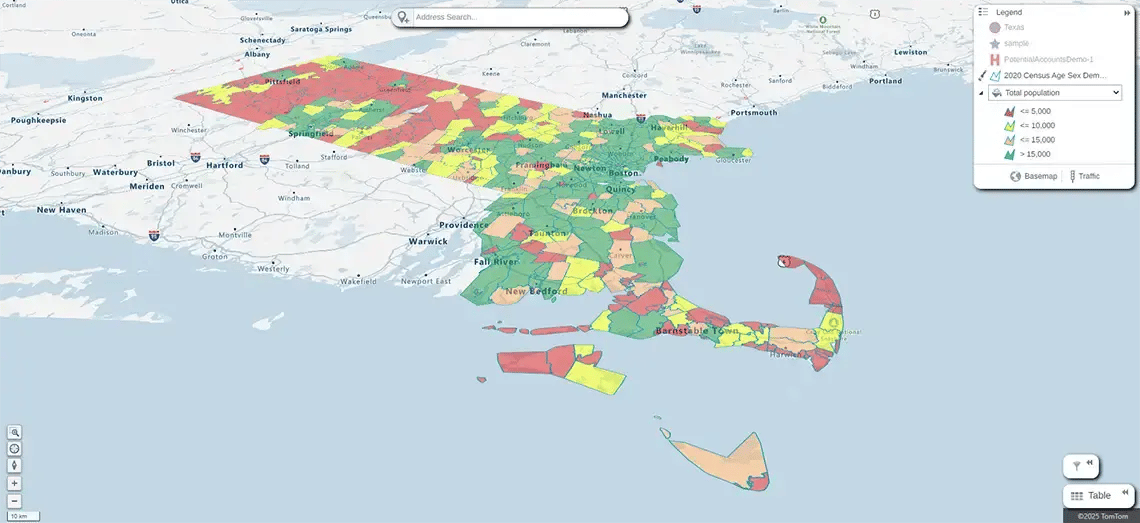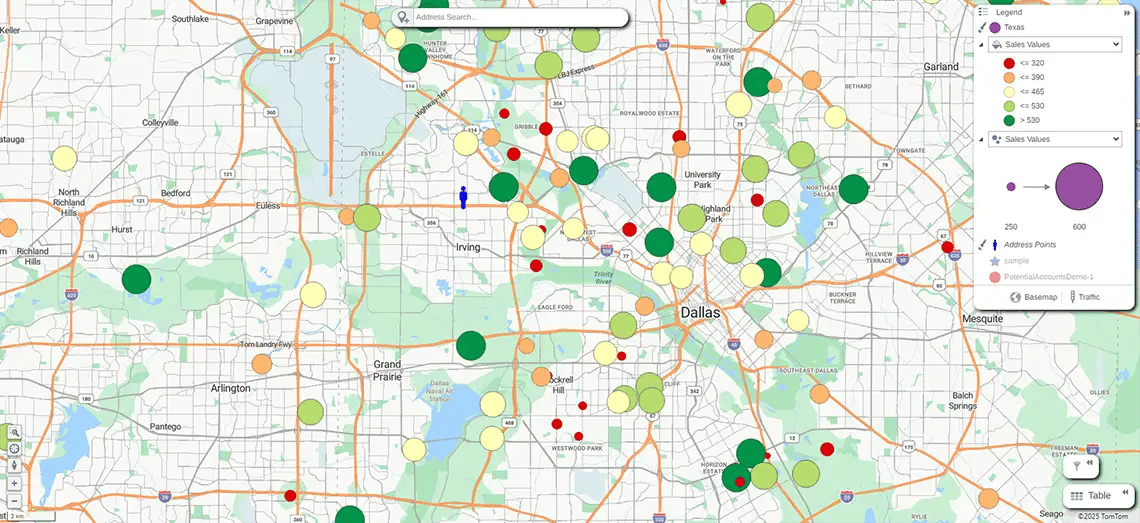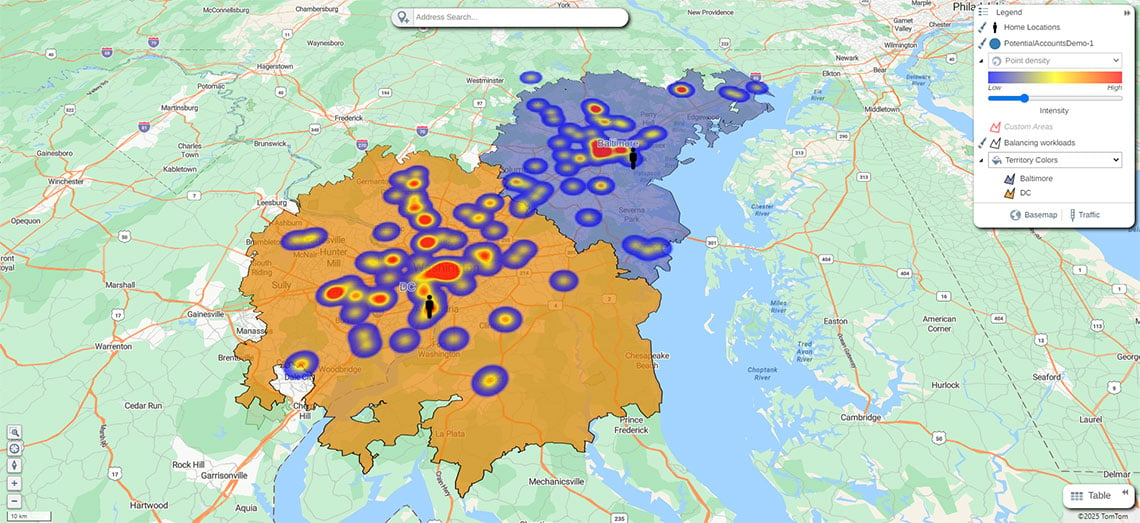Sales teams thrive on momentum. But when territories aren't structured properly, that momentum turns into misalignment, inefficiency, and missed opportunities.
Reps waste time chasing the same leads, some territories are overloaded while others are ignored, and customers receive inconsistent service—making it easy for competitors to step in.
Many businesses don't realize they have a territory problem until growth stalls, rep turnover rises, or key deals are lost. Even the best teams struggle to scale without a clear, structured approach to sales territory management.
A data-driven, well-defined territory strategy isn't just about organization—it's the foundation for predictable growth. If your team isn't operating within a structured sales framework, you lose time, revenue, and market share.
The Hidden Cost of an Unstructured Sales Approach
At first, an informal sales process might seem to work. Reps find leads, close deals, and build relationships. But over time, the cracks begin to show.
- Reps start competing for the same customers, causing confusion and frustration
- Some markets get too much attention while high-value regions remain untapped
- Sales efforts become reactive, rather than part of a larger, long-term strategy
- Customer relationships suffer, as accounts shift between reps too often
Without defined territories, businesses lack control over sales operations. There's no clear visibility into performance by region, no strategy for assigning reps efficiently, and no way to scale without creating chaos.

Why Sales Territory Management is the Missing Link to Growth
Companies that invest in territory management don't just improve sales efficiency, but they create a scalable system that grows with them. Here's what changes when sales territories are structured with intention:
1. Sales Teams Focus on the Right Opportunities
Without defined territories, sales reps tend to focus on the easiest leads—not necessarily the best ones. This creates inconsistencies in coverage and leaves high-value prospects overlooked.
With a structured approach:
- Reps know exactly where to focus and how to prioritize their time
- Businesses ensure high-potential opportunities aren't missed
- Sales teams work strategically instead of reactively

2. Customers Receive Better, More Consistent Service
When accounts are passed between multiple reps, customer trust erodes. Without territory stability, customers don't get a consistent point of contact, making it easier for competitors to step in.
With structured territories:
- Customers build relationships with dedicated reps who understand their needs
- Reps develop deep market expertise, leading to better sales conversations
- Service remains consistent, even as the company scales

3. Businesses Scale Without Operational Chaos
Growth is great—until it creates territory confusion, resource imbalances, and team burnout. As new reps join, the lack of a structured framework leads to coverage gaps and inefficiencies.
With a defined sales territory strategy:
- New reps onboard faster with clear assignments
- Sales leaders can expand coverage without disrupting existing markets
- Scaling becomes seamless, not chaotic
Expanding your sales team? Make sure your territories scale with you
Explore eSpatial's sales territory mapping software.
How Territory Management Solves Real Business Challenges
Without structured sales territories, businesses experience ongoing inefficiencies that limit growth. The lack of direction, oversight, and strategic focus leads to missed opportunities, inconsistent performance, and frustrated sales teams.
Here's how businesses struggle without territory management and how a structured approach changes everything:
|
The Challenge |
Without Territory Management |
With a Structured Territory Plan |
|
Sales Team Performance |
Reps compete for the same leads or neglect high-value opportunities. Sales efforts feel disorganized. |
Reps have defined areas of focus, reducing overlap and increasing efficiency. |
|
Customer Experience |
Prospects get contacted by multiple reps, leading to confusion and inconsistent service. |
Dedicated account ownership allows reps to build stronger relationships and increase retention. |
|
Expansion & Growth |
New markets are approached haphazardly, leading to inefficient coverage. |
Territories scale alongside the business, ensuring new markets are covered strategically. |
|
Workload Balance |
Some reps are overwhelmed, while others struggle with too few leads. |
Territories are structured based on sales potential, keeping workloads fair and manageable. |
|
Revenue Predictability |
Performance varies by rep, making it difficult to forecast sales and growth. |
Defined territories provide measurable sales data, improving forecasting accuracy. |
Without structured territories, sales efforts feel reactive, meaning businesses constantly chase efficiency instead of building a foundation for growth. A structured sales territory plan eliminates these issues, providing clarity, accountability, and strategic direction for both reps and leadership.
Why Technology Is Key for Sales Territory Management
Even businesses with a strong sales territory plan struggle to execute it effectively without the right tools.
Without real-time mapping and optimization technology, companies face:
- Outdated, static territories that don't adapt to market changes
- Manual adjustments that take weeks instead of minutes
- Limited visibility into performance across regions
Companies relying on spreadsheets or static maps often fall behind competitors who optimize territories with data-driven insights.
How eSpatial Helps Businesses Manage and Optimize Sales Territories
eSpatial's territory mapping and optimization tools help businesses:
- Visualize customer distribution to ensure reps are focused on the right areas
- Identify coverage gaps and adjust territories proactively
- Monitor sales performance by region and reallocate resources as needed
- Automate realignment so territories stay optimized as the business grows


By integrating real-time insights and automation, eSpatial helps businesses stay ahead of market changes and ensure their sales teams are always operating at peak efficiency.
Why Sales Territory Management Can't Be an Afterthought
Sales success is about effort and strategy. Without structured territories, sales teams lose focus, struggle to scale, and miss key opportunities.
With eSpatial's mapping and optimization tools, businesses can:
- Align sales coverage with real market potential
- Improve team performance with structured, data-driven territories
- Scale strategically without creating inefficiencies
At eSpatial, we help businesses turn scattered sales efforts into structured, scalable success. With powerful mapping and optimization tools, you can design, analyze, and refine sales territories—so your team always works smarter, not harder.
 by
by 
